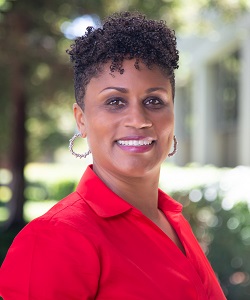Across the healthcare industry, we are continually seeking ways to improve patient outcomes, advance medical knowledge and enhance the overall well-being of society. One critical aspect of this pursuit is ensuring clinical trials are diverse to represent the people they aim to serve. Yet, for far too long, the lack of diversity in clinical trials has hindered our ability to fully understand the nuances of diseases, treatments, and their effects on different populations.
While nearly 40% of the U.S. population consists of people of diverse ethnic and cultural backgrounds, Hispanics and African Americans represent only 5% of clinical trial enrollees, due to a long history of mistrust and societal barriers. This lack of representation has profound consequences, as treatments developed with a narrow patient pool may not work as effectively for the broader population, leading to suboptimal therapies and care for many. As an industry, we must do better, and we can start by reducing barriers to participating in clinical trials.
When we begin thinking about a new clinical trial, my colleagues at Abbott and I go straight to the design of the trial and ensuring the people we’re trying to serve are represented. This has become part of the best practices we have developed for Abbott’s newly minted Diversity in Research Office. For example, we ask ourselves “Have we considered people’s gender, location, income and race to ensure we’re being inclusive in our clinical trial design? It’s imperative to consider all the different factors that create barriers for people to participate in clinical trials. We’re not checking boxes – it’s about ensuring that every patient’s unique characteristics are considered in the pursuit of better healthcare.
There are three key barriers to clinical trials and enrollment that hospitals and health systems can help with.
- Lack of access. Many trials are conducted at large academic centers, hospitals or clinics due to longstanding relationships between the test site and the companies developing the therapies or devices. This historical investment in the same test sites has led to diverse and marginalized communities having reduced access to the clinical trial, either due to simple lack of proximity or barriers like a lack of transportation or cost of transportation. As we design clinical trials, we must consider all of the people we aim to include and design the test sites with those people in mind. By partnering with healthcare systems to better understand the community around them and the resources available, we can implement strategies that increase access like establishing trial sites in diverse and rural locations, offering transportation support or utilizing mobile clinics, implementing remote monitoring and telemedicine options where feasible, extending clinic hours and more.
- Lack of trust and representation. There is a historical mistrust of the medical establishment among people of color – and with good reason, including unethical medical experiments, medical racism and cultural insensitivity. One way to help rebuild trust – and a strategy we’ve implemented at Abbott – is investing in training and recruiting a diverse population of future clinical trial leaders, so that under-represented groups recruited for clinical trials can work with physicians, nurses and clinical investigators from their own communities. To this end, Abbott dedicated $5 million for nearly 300 new scholarships over the next 5 years at medical schools at historically black colleges and universities (HBCUs) and minority nursing associations. As another example of strategic partnership, Abbott is working with Barnett International to provide a comprehensive education program to support the training of new coordinators who are from diverse backgrounds and will work with under-represented communities.
- Lack of understanding. People don’t always understand the purpose, risks and benefits of a clinical trial, often associating participation in them with being a “guinea pig” or a “test subject.” It’s our job as ambassadors of the healthcare system to explain to clinical trial participants and potential participants the safety protocols, rigorous process and unmatched access to innovative therapies. When designing clinical trials, we must develop and equip health systems with culturally appropriate patient-facing communications that don’t simply reinforce the benefits of participation, but also instill confidence and trust. Further, these communications must be multilingual and its critical there is a translator present throughout the recruiting and clinical trial process. By collaborating with trusted partner organizations and community-based organizations, we can disseminate information about clinical trials through trusted channels and appropriate languages while creating more opportunities for one-on-one dialogue about concerns and benefits of participating.
Understanding the challenges that the system faces is the first step to ensuring all clinical trials represent all of the people they’re intended to serve. Only in understanding and intentionally pursuing meaningful and sustainable solutions can we drive change. By taking practical, research-backed steps to increase diversity in clinical trials and sharing lessons with each other along the way, the healthcare system at large will ensure that its innovations benefit everyone.


















